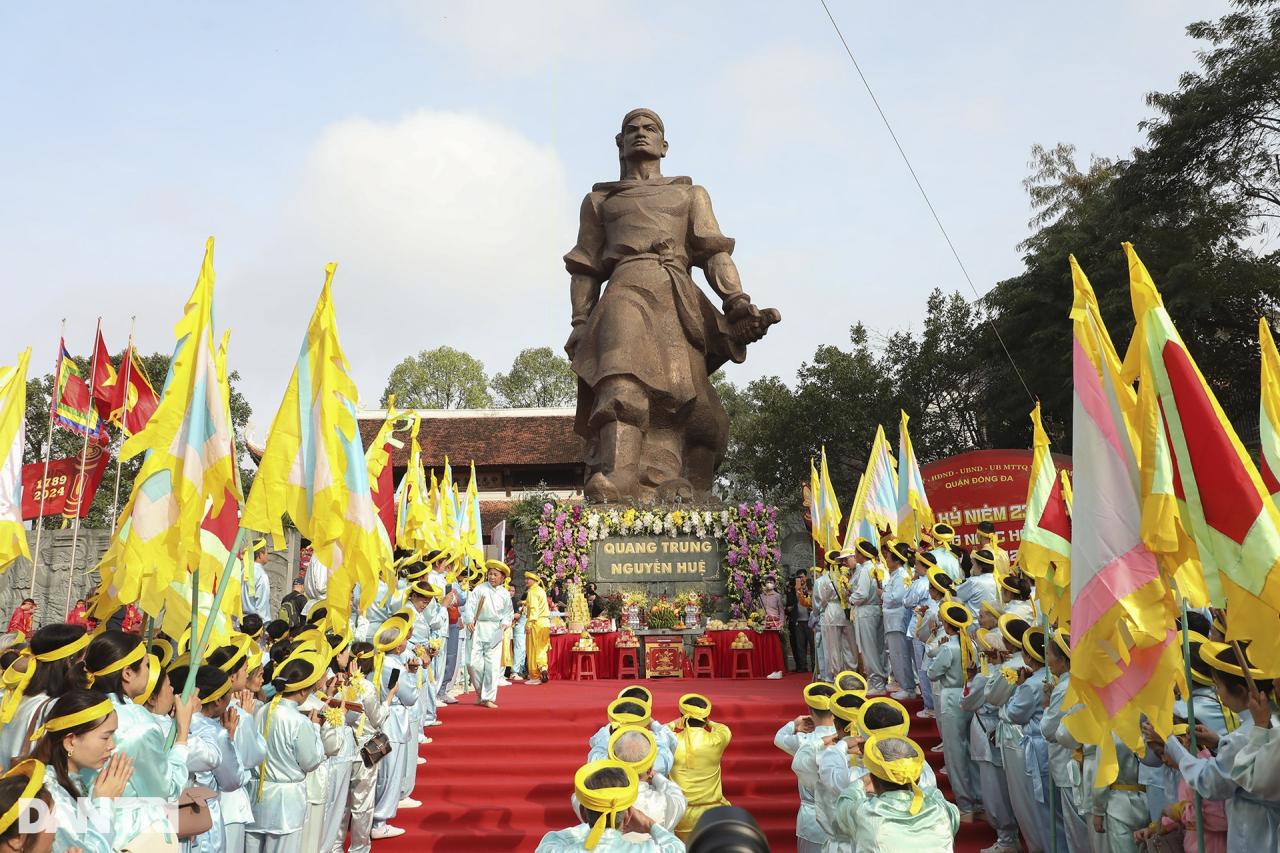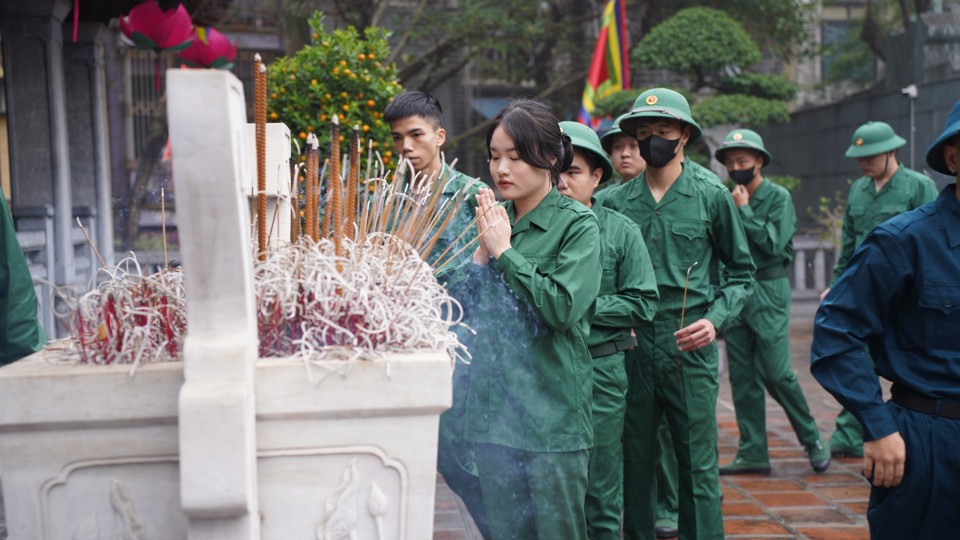To implement the 2024 Work Program, with a series of heritage connection activities, on June 22, 2024, a delegation of officials and civil servants of Dong Da Cultural Park led by Ms. Vu Thi Thanh Huong – Head of the Management Board organized a field trip to study at a number of relic sites in Vinh city, Nghe An province.
Journey to the National Monument Complex of Dung Quyet Mountain – Phuong Hoang Trung Do and the Temple of Emperor Quang Trung
Associated with the history of the ancient Phuong Hoang Trung Do, which was the capital built by Emperor Quang Trung on the Lam River and Dung Quyet Mountain, Phuong Hoang Trung Do is a heroic testament demonstrating the cultural vision of Nguyen Hue Quang Trung in the process of fighting for national unification, building a peaceful, prosperous and happy life for the Vietnamese people. The National Scenic Relic Site complex of Dung Quyet Mountain and Phuong Hoang Trung Do was recognized by the Ministry of Culture and Information as a National Scenic Relic Site since 1962.
Emperor Quang Trung Temple located on Dung Quyet Mountain was inaugurated on May 7, 2008 on the occasion of the 220th anniversary of Phuong Hoang Trung Do which is a majestic and mysterious spiritual and cultural address, – a place likened to a green gem that nature has bestowed upon Nghe An and Vinh city. Dung Quyet Mountain has four sacred animals: Long Thu (Dragon’s head), Phuong Duc (the phoenix wing), Quy Boi (Turtle’s back) and Ky Lan. The ancients called this a sacred land, because of the convergence of the four sacred animals (Dragon, Unicorn, Turtle, Phoenix). This is not only a place to commemorate a national hero but also a feat associated with the reign of King Quang Trung and the Tay Son dynasty.
So to go to the temple, visitors will follow 1 km of winding mountain roads, enjoy the fresh air of nature and the sky. Step up 81 three-step staircases, the temple architecture appears majestic and ancient, typical of temple architecture in Vietnam. The temple area is a four pillar gate, consisting of a large gate and two small gates symmetrically on both sides. The large gate is arranged with 2 floors and 8 roofs made of ironwood in a 2-storey stacked roof style, all 3 gates are covered with nose tiles.
Next is a four-pillar screen made of stone with carved patterns. Behind the screen are two beer houses facing each other. The stele house on the right hand side includes a large bell and a stele engraved with a poem by President Ho Chi Minh written about Emperor Quang Trung with national pride. The stele house on the left hand side consists of a large drum and a stele engraved with the merits of Emperor Quang Trung, recording brilliant milestones in the Emperor’s great career.
Next is the left (Ta Vu) and right (Huu Vu) house, including 3 compartments, 2 wings made of ironwood. The right (Huu Vu) house is the house to welcome delegates and delegations to visit. The Left (Ta Vu) House is a gallery of materials and artifacts related to the active life of Emperor Quang Trung and the Tay Son Dynasty. Between the two houses is a 1,500-square-meter yard with a garden of giant trees, bodhi trees and potted plants that blend into the space of a romantic pine forest.
The lower, middle, and upper halls are considered the center of the entire temple, designed in the shape of a triangle, rising gradually. All 3 houses are made of ironwood, carved with motifs in the style of the Nguyen Dynasty. The worshiping frame at the temple is arranged according to the traditional worship of the Vietnamese people, which is the with the Buddha in Front and Holy at Back. Notably, at the lower house is a great picture in Chinese characters, transliterated “Nghe duc Binh Sinh” which translates to: Nghe An is the homeland of the ancestors, and Binh Dinh is the place where the hero in cloth was born and raised
At the relic site, the Dong Da Cultural Park delegation offered incense at the Temple of Emperor Quang Trung to express their gratitude to the outstanding hero of the Vietnamese people in the 18th century; worked and exchanged with the relic management board documents about Emperor Quang Trung – Nguyen Hue and learned experiences in relic management and conservation.
Visit Uncle Ho’s hometown, Sen village
Visit the Sen Village relic site, offer flowers in memory of the 5-room thatched house of the former Junior doctor Nguyen Sinh Sac, which holds precious memories of leader Ho Chi Minh, listen to explanations about the relic site and touching stories about the life of President Ho Chi Minh. The familiar and simple landscapes and artifacts of the village bamboo fences, small dirt roads, yarn spinning, looms, mulberry banks… along with the artifacts in the relic site, associated with the image of Uncle Ho, still retain his warmth.
The journey going back to the source helped each member of the delegation gain more knowledge about history, explore and learn about the land and people of Nghe An, and learn experiences in preserving and promoting the value of relic sites.
With gratitude to the heroes, patriotism, national pride, the staff at Dong Da Cultural Park will constantly strive, cultivate, and practice ethics and lifestyle; constantly study and follow the ideology, morality, and style of President Ho Chi Minh, joining hands to build a rich, beautiful, and civilized Vietnam.



 Tiếng Việt
Tiếng Việt







